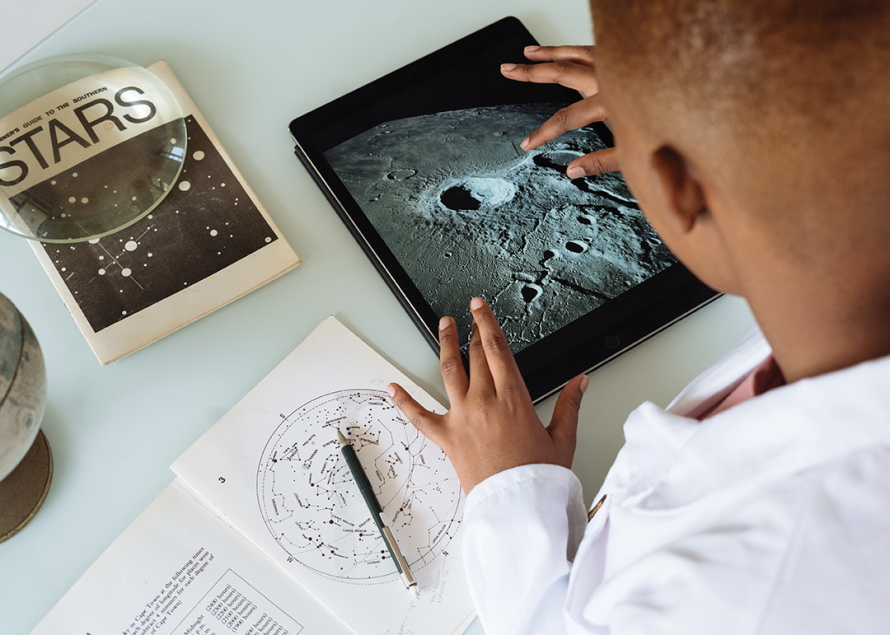The COVID-19 pandemic utterly derailed the “normal” course of education in 2020, disrupting traditional ways of learning for 1.6 billion students worldwide — and impelling lasting changes within the American education system. The initial response marshaled during the early phase of the coronavirus crisis focused on implementing remote learning modalities as an emergency response. Teachers were asked to become user-experience designers, parents were foisted into roles of tech support and test proctors, and our students were forced to learn an entirely new mode of classroom behavior. While the situation was far from ideal and as mistakes were made along the way, we speedily incorporated and adapted to new technological skills in our daily lives.
As the pandemic has evolved, so, too, have education responses. While the pandemic’s long-term implications for education are still being discovered, the crisis has given us an unprecedented opportunity to reimagine the traditional model of school-based learning, to accelerate the development of new technologies and instructional strategies for delivering education solutions at scale, and to reconsider and reform how these new solutions support the collaborative and intensely human aspects of teaching and learning.
I caught up with Peter Jung, M.Ed., information and resource coordinator for The Arc of King County, to discuss his views on the lasting impact of COVID-19 and education technology on the future of learning.
Pandemic burnout
After persevering through the hardest school years in memory, our teachers, administrators and school staff are exhausted — and increasingly burning out. A 2022 survey released by the National Education Association, the nation’s largest union, representing 3 million educators, revealed that an alarming 55 percent of educators are now indicating that they are ready to leave the teaching profession earlier than planned, due to pandemic stress.

Jung surmises that the reason we’re seeing such significant staff shortages and resulting educator burnout is because of how our technology rollout was implemented in 2020. Most educators received little guidance on how to provide a high-quality digital learning experience — something usually initiated after months of intentional collaboration between educators and user experience designers.
“They were trying to replicate the classroom experience over Zoom, which is literally the worst thing you can do. You are [inadvertently] removing everything that is good about distance learning and trying to put the standards and norms of in-person learning through that, which is a medium that just does not work. It’s not effective. It’s nonsensical,” says Jung. To make this point, Jung poses the idea of expecting an 8-year-old to sit still for more than four hours in front of a Zoom screen. As parents, we know this isn’t the best model for most kids.
The NEA notes that a large part of “Zoom fatigue” stems from the fact that video classroom interactions work differently than in-person education, which is a deeply invested, richer human endeavor. In a videoconferencing context, features such as enlarged face sizes, limited ability to read body language and other social cues, and slight lags in connection/communication negatively affect our bodies’ dopamine and cortisol levels.
Embracing digital flexibility
“The better way to look at [the role of technology in student learning] is to embrace its flexibility,” says Jung.
He describes a successful hybrid learning model used in a California school: “They would have the kids watch lectures at home — that was their homework. During their downtime, they would just watch these lectures, and then when they went to school, they would be doing the homework. The teacher would be walking around with an iPad or device, which enabled them to see where each kid was getting stuck.”
In this hybrid model, combining both remote digital and in-person techniques, the technology enhanced the experience by revealing opportunities for students and teachers to zero in on important in-person and peer-to-peer educational connections. The flexibility afforded by this model, Jung says, enables teachers to better “pinpoint the problem and use mastery-based learning,” although it may require additional fine-tuning for “nuanced classes like history or health.”
There’s no going back
Instructure, a developer of learning management systems, released its second annual survey on the 2022 “State of Teaching and Learning in K–12 Education,” which indicates that educators and parents alike reported an “increased openness to digital learning.” While teachers and administrators experienced many obstacles to early rounds of technology implementation, the study shows that 58 percent of educators surveyed now have a more positive opinion of online learning than before the COVID-19 pandemic.
Of the parents surveyed, 68 percent believed technology is beneficial in providing access to individualized programs, underscoring that the personalized instruction and self-paced learning aspects of ed tech solutions have had a positive impact on student success. In addition, 83 percent of respondents believed that digital technology will continue to grow in importance when it comes to enhancing classroom instruction and boosting student engagement, motivation and achievement.
What’s clear is that technology is no longer just a convenient auxiliary to instruction: It has become essential to K–12 pedagogy.
Learning software beyond Zoom
When it comes to incorporating ed tech into learning, don’t assume that the teacher/student experience is limited to Zoom and agendas. Jung describes a number of amazing innovations that combine gaming with learning, such as a novel twist on Dungeons & Dragons groups that teaches marine biology, or prescription video games for supporting students with learning differences.
EndeavorRX is an immersive prescription video game experience delivered through mobile devices for kids ages 8–12 with ADHD. Jung has seen this learning application in action and finds its potential intriguing and promising. “I actually saw one of my former clients try it back when I worked at an in-home mental health agency. It provides a lot of biofeedback to slow the game down when you’re getting a bit too excited.”
Another promising game is Ava, a role-playing platform adventure created for the autistic community that follows an autistic star mapper as she works through social challenges, battles self-doubt and discovers community. Identifying as an autistic person himself, Jung really enjoys this game’s positive representations of autism. “What I really like about it is it’s like this little platformer with this girl who talks with people, and she’s a space pirate. There’s even one character who is nonverbal, and they bond over stemming. So, those representations I think are really important,” he says.

Noting that games and technology have the ability to expand student learning beyond the rote learning methods of yore, Jung asks us to consider where technology can take us. “You start thinking about, okay, what are the larger skills? Are these skills transferable across other contexts?” Emerging education technology advances allow us to posit these larger questions about the ultimate goals of education, and whether these goals are measurable via standardized testing.
Creating equity through normalization and innovation
As digital learning extensions become richer, more fulfilling and more effective at teaching, it may be helpful to begin viewing the creation of new technologies to support learning disabilities and special education students as leading the curve of innovation — not following in its wake. Jung is an advocate for “normalizing accommodation.” He elaborates: “There is a justice element here. Accommodation isn’t just for disabled people. Everything that disabled people do benefits everyone.”
The AARP has similarly noted that the benefits of disability accommodations are “global.” If it wasn’t for ADA-compliant wheelchair ramps, parents with strollers would be stuck between a hill and a hard place. Accommodating signage also helps persons who are aging and experiencing hearing or vision loss.
The University of Minnesota’s Accessible U website expands on this idea by noting that an accessible design approach to developing technology saves time and effort in the future while benefiting the largest number of people in the present. Where would we be today without video captions for viewing programs in a noisy room, for example? The university also points out that catering to audiences of all abilities also better supports users of older technology and devices, providing an additional means of supporting equity across socioeconomic factors.
Navigating an ever-shifting educational landscape
So, what can we expect for our students and education in the future, knowing that our pandemic-accelerated ed tech awakening is here to stay? “I think we have more tools. We have a better idea of what works and what doesn’t,” says Jung. With a baseline of digital competence and a foundation of utilities now established, our skills in both learning and teaching with digital applications can only increase — and what defines our learning goals will continue to shift in tandem with the ongoing evolution of these technologies.











